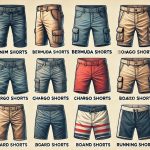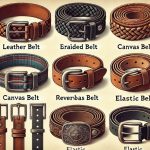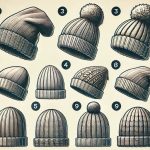Cameras have evolved significantly over the years, catering to diverse needs ranging from casual photography to professional filmmaking. Understanding the production cost distribution of cameras sheds light on the various factors influencing their pricing.
How Cameras are Produced
1. Raw Materials and Components:
Camera production begins with the sourcing of high-quality raw materials and components. These include glass for lenses, silicon for sensors, plastic and metal for camera bodies, and electronic components such as circuit boards and chips. The selection of these materials is crucial, as they determine the camera’s overall performance, durability, and image quality. Manufacturers often source these materials globally, ensuring that each component meets stringent quality standards before being used in the production process.
2. Design and Prototyping:
Once the materials are secured, the design phase begins. Engineers and designers collaborate to create a camera that is both functional and aesthetically pleasing. This phase involves extensive computer-aided design (CAD) and 3D modeling, allowing for the visualization of the final product. Prototypes are then built and tested rigorously to identify any potential issues. Adjustments are made as needed, ensuring that the camera meets all technical specifications and user expectations before moving into mass production.
3. Manufacturing Process:
The manufacturing process involves several stages, beginning with the precision crafting of lenses and sensors, followed by the assembly of the camera body. Automated machines handle many of these tasks to ensure consistency and precision, though some steps may require skilled manual labor, especially in high-end cameras. Components are carefully assembled, with strict quality control measures in place at each stage. The final product undergoes thorough testing, including checks for image quality, functionality, and durability.
4. Quality Control and Distribution:
After assembly, each camera undergoes extensive quality control tests to ensure it meets the manufacturer’s standards. These tests include verifying the functionality of each component, testing the camera in various conditions, and ensuring that it can withstand everyday use. Once the cameras pass these tests, they are packaged and prepared for distribution. Cameras are then shipped to retailers and distributors worldwide, where they are made available to consumers. This process is crucial to maintaining the brand’s reputation and ensuring customer satisfaction.
Production Cost Distribution
Here’s an overview:
- Image Sensor (30-40%)
- The image sensor is a crucial component, responsible for capturing light and producing the final image. It typically represents a significant portion of the production cost.
- Lens (15-25%)
- The quality and complexity of the lens greatly impact the overall cost of the camera. Higher-end lenses with advanced optics and features contribute more to the production cost.
- Electronics and Processing (10-20%)
- This includes the processing unit, image stabilization systems, autofocus mechanisms, and other electronic components necessary for camera functionality.
- Body and Construction (10-20%)
- The materials used in the camera body, such as magnesium alloy, aluminum, or polycarbonate, contribute to its durability and cost.
- Display and User Interface (5-10%)
- The quality of the display screen, along with the user interface components like buttons, dials, and touchscreen interfaces, adds to the overall production cost.
- Research and Development (R&D) (10-15%)
- Costs associated with designing and developing new camera models, technologies, and features.
- Marketing and Distribution (10-15%)
- Expenses related to marketing campaigns, branding, packaging, and distribution channels.
9 Types of Cameras

1. DSLR Cameras
Description
Digital Single-Lens Reflex (DSLR) cameras are popular among enthusiasts and professionals for their versatility and image quality. They feature an optical viewfinder and interchangeable lenses, allowing photographers to capture a wide range of subjects with precision and control.
Popular Brands
| Brand | Established | Location |
|---|---|---|
| Canon | 1937 | Tokyo, Japan |
| Nikon | 1917 | Tokyo, Japan |
| Sony | 1946 | Tokyo, Japan |
| Pentax | 1919 | Tokyo, Japan |
| Fujifilm | 1934 | Tokyo, Japan |
Averaged Retail Price on Amazon
- Price Range: $500 – $3000
Popularity
DSLR cameras remain highly popular among photography enthusiasts and professionals due to their reliable performance, extensive lens selection, and robust build quality. They are commonly used for various genres, including portrait, landscape, wildlife, and sports photography.
Production Details
- White Label Production Cost in China: $300 – $800 per unit
- Product Weight: 600-900 grams (body only)
- Minimum Order Quantity (MOQ): 100 units
- Major Materials: Magnesium alloy or polycarbonate body, glass prism for viewfinder, CMOS image sensor, electronic components
2. Mirrorless Cameras
Description
Mirrorless cameras have gained popularity for their compact size, lightweight design, and advanced features. They use electronic viewfinders (EVFs) or LCD screens for composing images and lack the mirror mechanism found in DSLRs, resulting in a more streamlined design.
Popular Brands
| Brand | Established | Location |
|---|---|---|
| Sony | 1946 | Tokyo, Japan |
| Panasonic | 1918 | Osaka, Japan |
| Fujifilm | 1934 | Tokyo, Japan |
| Olympus | 1919 | Tokyo, Japan |
| Canon | 1937 | Tokyo, Japan |
Averaged Retail Price on Amazon
- Price Range: $500 – $2500
Popularity
Mirrorless cameras are increasingly popular among photographers seeking a balance between portability and performance. They offer advanced autofocus systems, high-speed shooting, and 4K video capabilities, making them suitable for various photographic genres, including street photography, travel, and videography.
Production Details
- White Label Production Cost in China: $300 – $700 per unit
- Product Weight: 400-800 grams (body only)
- Minimum Order Quantity (MOQ): 100 units
- Major Materials: Magnesium alloy or polycarbonate body, electronic viewfinder or LCD screen, CMOS image sensor, electronic components
3. Action Cameras
Description
Action cameras are compact, rugged devices designed for capturing adventures and extreme sports. They are typically waterproof, shockproof, and feature wide-angle lenses for immersive shots. Action cameras excel in capturing fast-paced action in challenging environments.
Popular Brands
| Brand | Established | Location |
|---|---|---|
| GoPro | 2002 | San Mateo, CA, USA |
| DJI | 2006 | Shenzhen, China |
| Sony | 1946 | Tokyo, Japan |
| Insta360 | 2014 | Shenzhen, China |
| Garmin | 1989 | Olathe, KS, USA |
Averaged Retail Price on Amazon
- Price Range: $200 – $600
Popularity
Action cameras are extremely popular among adventurers, athletes, and outdoor enthusiasts who want to document their experiences in high-definition video and photos. They are also used for vlogging, travel, and capturing family moments.
Production Details
- White Label Production Cost in China: $100 – $300 per unit
- Product Weight: 100-200 grams
- Minimum Order Quantity (MOQ): 500 units
- Major Materials: Plastic or metal body, waterproof housing, wide-angle lens, CMOS image sensor, electronic components
4. Compact Cameras
Description
Compact cameras, also known as point-and-shoot cameras, are designed for simplicity and ease of use. They are pocket-sized devices with fixed lenses and automatic shooting modes, making them ideal for casual photographers, travelers, and everyday snapshots.
Popular Brands
| Brand | Established | Location |
|---|---|---|
| Canon | 1937 | Tokyo, Japan |
| Sony | 1946 | Tokyo, Japan |
| Panasonic | 1918 | Osaka, Japan |
| Nikon | 1917 | Tokyo, Japan |
| Fujifilm | 1934 | Tokyo, Japan |
Averaged Retail Price on Amazon
- Price Range: $100 – $500
Popularity
Compact cameras are popular among casual photographers and travelers who prioritize portability and simplicity. They are convenient for capturing everyday moments, family gatherings, and vacation memories without the need for advanced photography skills.
Production Details
- White Label Production Cost in China: $50 – $200 per unit
- Product Weight: 150-300 grams
- Minimum Order Quantity (MOQ): 500 units
- Major Materials: Plastic or metal body, glass lens, CCD or CMOS image sensor, electronic components
5. DSLM Cameras
Description
Digital Single-Lens Mirrorless (DSLM) cameras combine the benefits of DSLRs and mirrorless cameras. They feature interchangeable lenses and electronic viewfinders like mirrorless cameras but retain the ergonomic design and handling characteristics of DSLRs.
Popular Brands
| Brand | Established | Location |
|---|---|---|
| Panasonic | 1918 | Osaka, Japan |
| Olympus | 1919 | Tokyo, Japan |
| Leica | 1914 | Wetzlar, Germany |
| Fujifilm | 1934 | Tokyo, Japan |
| Sigma | 1961 | Kawasaki, Japan |
Averaged Retail Price on Amazon
- Price Range: $800 – $3000
Popularity
DSLM cameras are gaining popularity among photographers who desire the versatility of interchangeable lenses and advanced features in a more compact and lightweight package. They are suitable for a wide range of photography genres, including portraits, landscapes, and street photography.
Production Details
- White Label Production Cost in China: $400 – $1000 per unit
- Product Weight: 400-800 grams (body only)
- Minimum Order Quantity (MOQ): 100 units
- Major Materials: Magnesium alloy or polycarbonate body, electronic viewfinder or LCD screen, CMOS image sensor, electronic components
6. Medium Format Cameras
Description
Medium format cameras use larger sensors than full-frame or APS-C cameras, resulting in higher image resolution and greater detail. They are favored by professional photographers for studio work, fashion photography, and landscape photography where image quality is paramount.
Popular Brands
| Brand | Established | Location |
|---|---|---|
| Phase One | 1993 | Copenhagen, Denmark |
| Hasselblad | 1841 | Gothenburg, Sweden |
| Pentax | 1919 | Tokyo, Japan |
| Fujifilm | 1934 | Tokyo, Japan |
| Leica | 1914 | Wetzlar, Germany |
Averaged Retail Price on Amazon
- Price Range: $5000 – $30000
Popularity
Medium format cameras are primarily used by professional photographers and enthusiasts who require the highest image quality and resolution for their work. They are less common among general consumers due to their high cost and specialized nature.
Production Details
- White Label Production Cost in China: $2000 – $10000 per unit
- Product Weight: 800-1500 grams (body only)
- Minimum Order Quantity (MOQ): 10 units
- Major Materials: High-grade metal body, large CMOS or CCD sensor, electronic viewfinder or LCD screen, advanced optics
7. Instant Cameras
Description
Instant cameras produce physical prints of photographs immediately after they are taken. They are popular for parties, events, and creative projects, providing instant gratification and a tangible memento of memories.
Popular Brands
| Brand | Established | Location |
|---|---|---|
| Fujifilm | 1934 | Tokyo, Japan |
| Polaroid | 1937 | Cambridge, MA, USA |
| Leica | 1914 | Wetzlar, Germany |
| Kodak | 1888 | Rochester, NY, USA |
| Lomography | 1992 | Vienna, Austria |
Averaged Retail Price on Amazon
- Price Range: $50 – $200
Popularity
Instant cameras have experienced a resurgence in popularity among millennials and Gen Z for their nostalgic appeal and unique photographic experience. They are often used for creative projects, scrapbooking, and capturing candid moments.
Production Details
- White Label Production Cost in China: $20 – $80 per unit
- Product Weight: 300-500 grams
- Minimum Order Quantity (MOQ): 500 units
- Major Materials: Plastic body, instant film cartridge, simple lens and shutter mechanism
8. 360-Degree Cameras
Description
360-degree cameras capture immersive, spherical images and videos, allowing viewers to explore the scene from all angles. They are used for virtual reality (VR) content creation, immersive storytelling, and documenting events in unique ways.
Popular Brands
| Brand | Established | Location |
|---|---|---|
| Insta360 | 2014 | Shenzhen, China |
| Ricoh | 1936 | Tokyo, Japan |
| GoPro | 2002 | San Mateo, CA, USA |
| Samsung | 1938 | Seoul, South Korea |
| Garmin | 1989 | Olathe, KS, USA |
Averaged Retail Price on Amazon
- Price Range: $200 – $1000
Popularity
360-degree cameras are popular among content creators, travel enthusiasts, and businesses seeking innovative ways to engage audiences. They offer a unique perspective and immersive viewing experience, making them ideal for virtual tours, social media content, and VR applications.
Production Details
- White Label Production Cost in China: $100 – $500 per unit
- Product Weight: 100-300 grams
- Minimum Order Quantity (MOQ): 500 units
- Major Materials: Plastic or metal body, multiple camera modules, image stitching software, electronic components
9. Professional Video Cameras
Description
Professional video cameras, also known as camcorders or cinema cameras, are designed for high-quality video production. They offer features such as interchangeable lenses, high bitrates, professional audio inputs, and robust build quality, catering to filmmakers, broadcasters, and videographers.
Popular Brands
| Brand | Established | Location |
|---|---|---|
| Sony | 1946 | Tokyo, Japan |
| Canon | 1937 | Tokyo, Japan |
| Blackmagic | 2001 | Port Melbourne, Australia |
| Panasonic | 1918 | Osaka, Japan |
| RED Digital Cinema | 2005 | Irvine, CA, USA |
Averaged Retail Price on Amazon
- Price Range: $2000 – $20000
Popularity
Professional video cameras are essential tools for filmmakers, broadcasters, and content creators who demand high-quality video production capabilities. They are used for a wide range of applications, including feature films, documentaries, television production, and commercial projects.
Production Details
- White Label Production Cost in China: $1000 – $5000 per unit
- Product Weight: 2-5 kilograms
- Minimum Order Quantity (MOQ): 10 units
- Major Materials: Metal body, large CMOS sensor, professional-grade optics, advanced audio and video processing components








